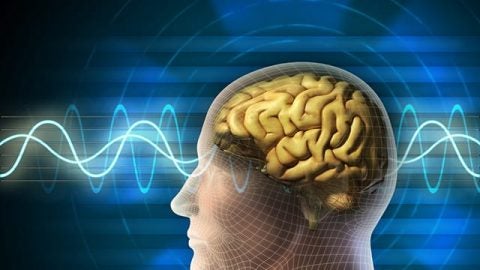During one sleep cycle that lasts, on average, about 90 minutes, people gradually passes through four different stages. The first three stages are those of non-REM (short for Rapid Eye Movement) sleep, during which you will experience, like and deep sleep. The fourth stage is REM sleep, and it’s basically when most of your dreaming occurs.
What Happens in REM Sleep?

This scenario can be alarming because it can potentially lead to movements that put the sleeper at peril. Imagine that you get up and start moving around the house while you’re dreaming. In your mind, you’re walking down the sunny shores of Copacabana Beach, but in reality, you are in your home and might just fall down the stairs.
The thalamus also plays a role here. It is the part of the brain that helps filter sensory information and takes a hold of motor control functions that reside deep inside the brain. The thalamus is used by the pons to send signals to the cerebral cortex, which is in charge of thinking, learning, and organizing the information you gain throughout the day. It is because of that scientists believe that REM sleep helps you store and learn information in a more efficient manner.
Take babies, for example. They spend about 50 percent of their snooze time in the REM sleep stage (adults spend only 20 percent in REM sleep), which can be correlated with the tremendous amount of information they gain in their first months of life. Science suggests that people who are deprived of REM sleep have a hard time remembering the things they’ve learned, which is why students, for example, should never spend the night before the test awake and studying.
You may want to read: Sleep Cycle Naps
What Do Dreams Mean?


Back in the day when people had less information about sleep and dream, it was believed that dreams were a passive process. Today, scientists have discovered that the brain is actually extremely active while you’re dreaming.
The activation-synthesis theory was born in 1977, and it was developed by two Harvard psychiatrists: J. Allan Hobson and Robert McCarley. Hobson implied that dreams have five characteristics: they are difficult to remember, provide strange sensory experiences, they imply the acceptance of strange content, often contain illogical content and provide intense emotions.
According to the activation-synthesis theory, the brain of a person who falls asleep tries to make sense of random signals that occur when sleeping. There are people out there who are more capable of controlling their dreams than others. For instance, they will be really careful with what their final thoughts before falling asleep are, as these can influence dream content.
Dream Interpretation

- The famous Sigmund Freud was the one to suggest that dreams are related to wish-fulfillment. He believed that the content of people’s dreams was actually a reflection of desires hidden in the subconscious. He suggested that dreams are a process that combines four elements: condensation (a series of thoughts presented in a single dream), displacement (emotional meaning is disguised), symbolization (elements inside the dream have deeper meanings), and secondary revision (weird dream elements are reorganized so that they could make sense).
- Calvin S. Hall said that dreams are depictions of our personal lives. He studied dream diaries of sleepers throughout the years and decided they can be categorized. He said that in order to be able to interpret dreams, you have to know what the dreamer does while he’s dreaming, what are the figures and objects that appear within a dream, what are the interaction between the dreamer and other characters, and what are the dream’s transitions, setting, and outcomes.
- Carl Jung had theories similar to Freud, but he added that dreams can also compensate for underdeveloped psyche parts of one’s waking life. He also implied that in order to be able to interpret dreams with great accuracy, you needed to know more about the individual dreamer.
- G. William Domhoff has studied dreams throughout his entire career. Together with Calvin Hall, they discovered that dreams reflect waking like of the sleeper, and also suggested that dreams are a result of neurological processes and schemas.
Conclusion
Dreams are an absolutely fascinating topic from both a neurological and a psychological point of view. The dreams that we come across during the REM sleep stage play multiple roles in our brain’s development. They can help us filter and store the information we learned throughout the day but, when remembered and interpreted correctly, they can also tell us a lot about what’s going on in our subconscious mind.